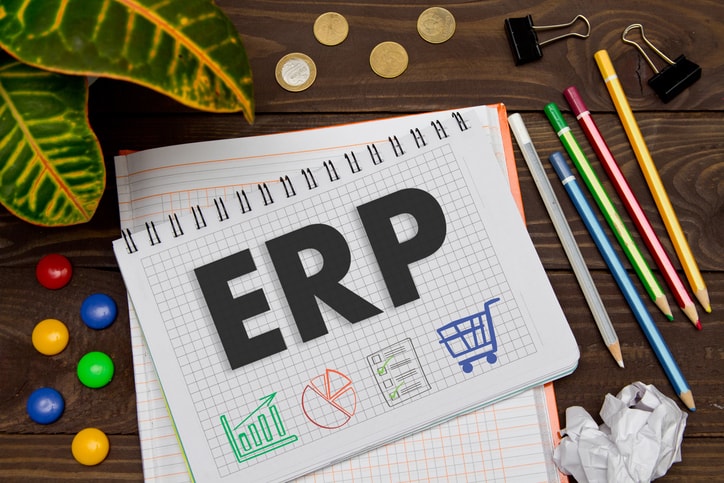By Kevin Riegelsberger
With how quickly technology is changing, today’s small- and medium-sized businesses are facing challenges unlike ever before. They must operate faster, meet greater customer expectations, and make intelligent businesses decisions on the fly. To accomplish this, they must use modern digital technologies to run their businesses – especially Enterprise Resource Planning (ERP) software.
However, when it comes to ERP platforms, “one size fits all” isn’t the best solution for any business. Small and medium companies have many similar challenges, yet are very different in their ability to implement technology and in terms of what they can afford. Additionally, a company in one vertical may have very different needs for its ERP system than a company in a different vertical for exactly the same business process.
Compounding this situation is the need for a flexible, future-proof platform and the challenge of meeting high customer expectations fueled by the efficiency and speed of Amazon. This can make it quite difficult for a small company to find the right business system software for the size and focus of its business. Given these challenges, what should small and medium businesses take into consideration when selecting a new ERP?
On-premise vs. Cloud ERP
On-premise solutions are primarily a relic of the past, but they are still being boxed up as modern business software platforms. These on-premise systems often require new hardware, expensive software customizations and costly ongoing maintenance. Cloud solutions are instead built on modern technology and support the capabilities that most small businesses need to reach their customers, such as e-commerce platforms and business intelligence. What’s more is that 77 percent of businesses believe that cloud technology gives them a competitive edge1. The downside to cloud-based solutions is they rely on an internet connection to work.
Bottom line: if you are in a remote area where your internet connection isn’t the best, then perhaps an on-premise solution is best for your business. If this is not an obstacle however, cloud-based solutions will allow you to operate more effectively.
Cost
A big differentiator between the two options is their pricing models— cloud is typically monthly subscription-based, and on-premise is often upfront plus yearly support and maintenance costs. This difference has created an illusion when it comes to value.
You can compare on-premise and cloud ERP systems to buying versus leasing a car. If you plan on keeping the car 15-plus years, owning tends to have a higher perceived value. However, the cost of maintenance, repairs and other wear-and-tear expenses can add up. Leasing, on the other hand, often includes warranty and maintenance for the duration of the lease, typically costs less than owning, and offers the unique ability to upgrade your car every few years. That’s why most businesses tend to lease cars instead of own them – and the same logic applies to business software.
Bottom line: keep a close eye on what goes into the cost of software and map out the long-term value and costs. If the latest technology isn’t a priority, or working on aging technology is a compromise worth having, then an on-premise solution may work for your business. If not, cloud-based solutions are the best bet for long-term cost savings.
Technology
The principle of technology with cars is also similar to ERP from a business perspective. Many on-premise ERP systems were designed before the early 2000s dot-com boom when businesses ran much simpler; they only had one warehouse of stock, or only one or two storefronts. This can be compared to cars that were designed in the same decade: think 8-track, AM/FM or cassette stereos. Fast forward to today, and the complexity of modern small business has grown exponentially. Most of today’s small businesses have multiple warehouses, third-party logistics and drop-shipping, and sell through multiple online marketplaces.
Have you ever used one of those cassette-to-3.5 mm converters to play your mp3 player or phone? They hardly work and the quality is often poor — this can easily be compared to the connectors and integrations you see in older ERP systems used to accommodate modern small business demands. They work, but not reliably, and aren’t truly designed for the needs of today’s small businesses.
Bottom line: while on-premise ERP may be appealing due to fact that it has been around for several decades, these platforms are unable to solve the complex problems facing today’s small businesses.
Enabling your competitive advantage
The final concern today’s small businesses should consider with their ERP platform is how it enables them to compete in the digital landscape. With the rise of Amazon, consumers have come to expect an easy ordering process with a great user experience, a vast selection of readily available products, lightning-fast shipping and easy payment options. These types of features in older ERP systems used to be out of reach for small businesses due to the cost of such systems, but not anymore. Modern cloud platforms have enabled lower-cost pricing and opened the door for small businesses to access the same technology capabilities as large businesses.
Don’t settle for ERP systems that lack the features, capabilities and technology that your small business needs. Examine each platform closely and determine the long-term costs and benefits. Keep searching for ERP products that fit your business and enable you to compete.
Kevin Riegelsberger is a business software industry veteran with more than 40 years of experience building and growing SaaS companies. He is board chair at VersAccounts Ltd., an all-in-one cloud ERP platform built for SMBs to help meet the complex needs of businesses in the age of Amazon.







